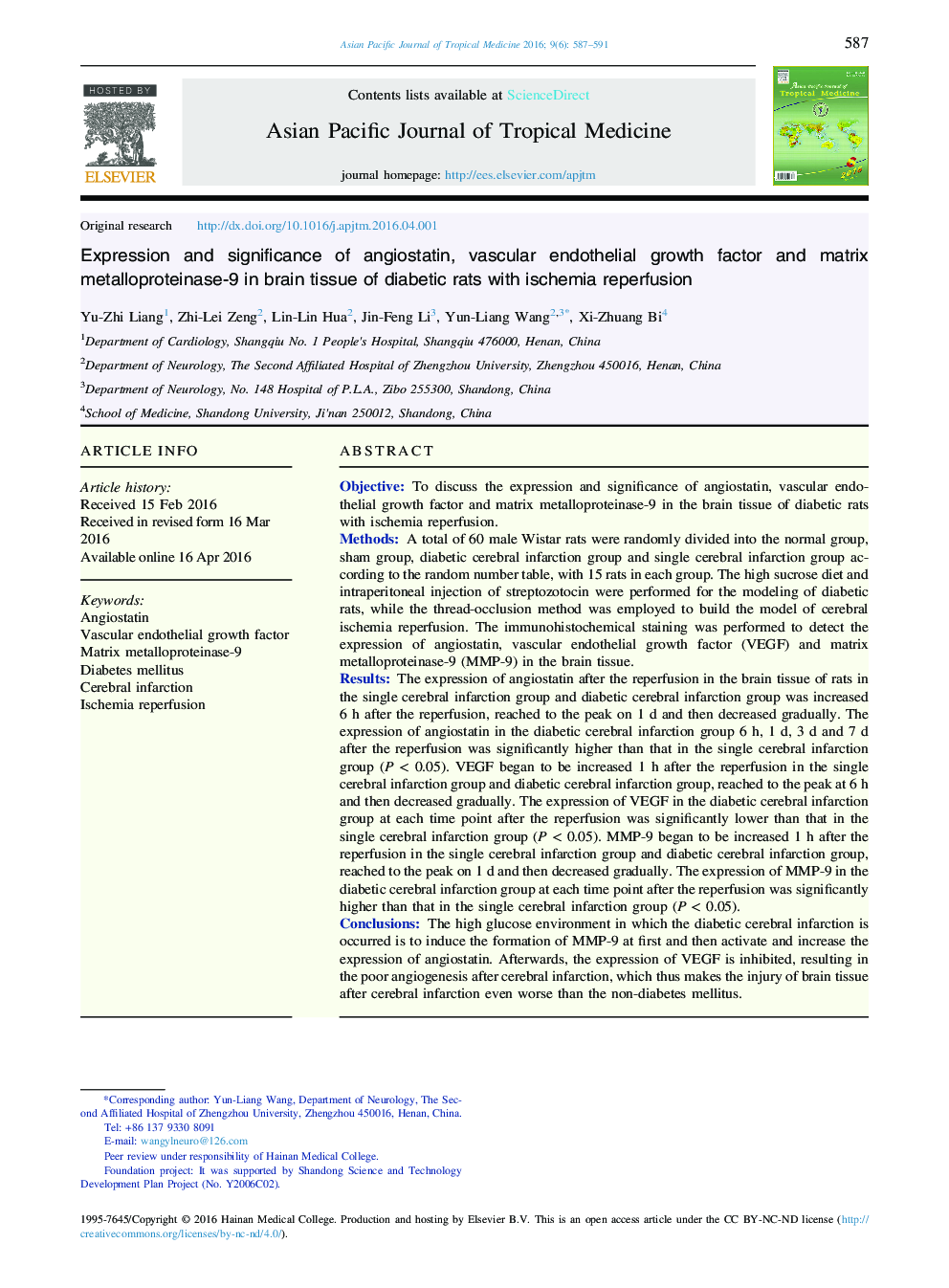| Article ID | Journal | Published Year | Pages | File Type |
|---|---|---|---|---|
| 3455169 | Asian Pacific Journal of Tropical Medicine | 2016 | 5 Pages |
ObjectiveTo discuss the expression and significance of angiostatin, vascular endothelial growth factor and matrix metalloproteinase-9 in the brain tissue of diabetic rats with ischemia reperfusion.MethodsA total of 60 male Wistar rats were randomly divided into the normal group, sham group, diabetic cerebral infarction group and single cerebral infarction group according to the random number table, with 15 rats in each group. The high sucrose diet and intraperitoneal injection of streptozotocin were performed for the modeling of diabetic rats, while the thread-occlusion method was employed to build the model of cerebral ischemia reperfusion. The immunohistochemical staining was performed to detect the expression of angiostatin, vascular endothelial growth factor (VEGF) and matrix metalloproteinase-9 (MMP-9) in the brain tissue.ResultsThe expression of angiostatin after the reperfusion in the brain tissue of rats in the single cerebral infarction group and diabetic cerebral infarction group was increased 6 h after the reperfusion, reached to the peak on 1 d and then decreased gradually. The expression of angiostatin in the diabetic cerebral infarction group 6 h, 1 d, 3 d and 7 d after the reperfusion was significantly higher than that in the single cerebral infarction group (P < 0.05). VEGF began to be increased 1 h after the reperfusion in the single cerebral infarction group and diabetic cerebral infarction group, reached to the peak at 6 h and then decreased gradually. The expression of VEGF in the diabetic cerebral infarction group at each time point after the reperfusion was significantly lower than that in the single cerebral infarction group (P < 0.05). MMP-9 began to be increased 1 h after the reperfusion in the single cerebral infarction group and diabetic cerebral infarction group, reached to the peak on 1 d and then decreased gradually. The expression of MMP-9 in the diabetic cerebral infarction group at each time point after the reperfusion was significantly higher than that in the single cerebral infarction group (P < 0.05).ConclusionsThe high glucose environment in which the diabetic cerebral infarction is occurred is to induce the formation of MMP-9 at first and then activate and increase the expression of angiostatin. Afterwards, the expression of VEGF is inhibited, resulting in the poor angiogenesis after cerebral infarction, which thus makes the injury of brain tissue after cerebral infarction even worse than the non-diabetes mellitus.
